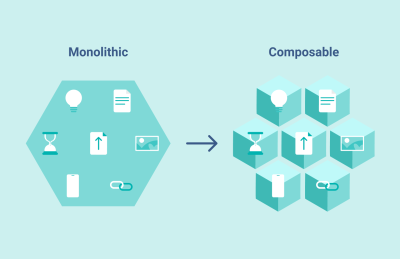UX research without users isn’t research. We can shape design ideas with bias, assumptions, guesstimates, and even synthetic users, but it’s anything but UX research. Yet some of us might find ourselves in situations where we literally don’t have access to users — because of legal constraints, high costs, or perhaps users just don’t exist yet. What do we do then?
Luckily, there are some workarounds that help us better understand pain points and issues that users might have when using our products. This holds true even when stakeholders can’t give us time or resources to run actual research, or strict NDAs or privacy regulations prevent us from speaking to users.
Let’s explore how we can make UX research work when there is no or only limited access to users — and what we can do to make a strong case for UX research.
This article is part of our ongoing series on design patterns. It’s also an upcoming part of the 10h-video library on Smart Interface Design Patterns 🍣 and the upcoming live UX training as well. Use code BIRDIE to save 15% off.
Find Colleagues Who Are The Closest To Your Customers
Contents
When you don’t have access to users, I always try to establish a connection with colleagues who are the closest to our customers. Connect with people in the organization who speak with customers regularly, especially people in sales, customer success, support, and QA. Ultimately, you could convey your questions indirectly via them.
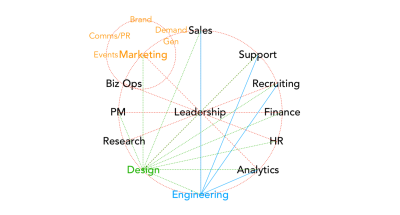
As Paul Adams noted, there has never been more overlap between designers and salespeople than today. Since many products are subscription-based, sales teams need to maintain relationships with customers over time. This requires a profound understanding of user needs — and meeting these needs well over time to keep retention and increase loyalty.
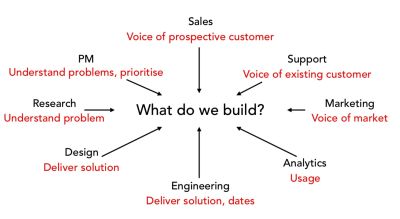
That’s where research comes in — and that’s exactly where the overlap between UX and sales comes in. In fact, it’s not surprising to find UX researchers sitting within marketing teams under the disguise of Customer Success teams, so whenever you can befriend colleagues from sales and Customer Success teams.
Gaining Insights Without Direct Access To Users
If you can’t get users to come to you, perhaps you could go where they are. You could ask to silently observe and shadow them at their workplace. You could listen in to customer calls and interview call center staff to uncover pain points that users have when interacting with your product. Analytics, CRM reports, and call center logs are also a great opportunity to gain valuable insights, and Google Trends can help you find product-related search queries.
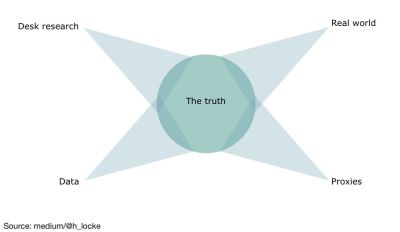
To learn more about potential issues and user frustrations, also turn to search logs, Jira backlogs, and support tickets. Study reviews, discussions, and comments for your or your competitor’s product, and take a look at TrustPilot and app stores to map key themes and user sentiment. Or get active yourself and recruit users via tools like UserTesting, Maze, or UserInterviews.
These techniques won’t always work, but they can help you get off the ground. Beware of drawing big conclusions from very little research, though. You need multiple sources to reduce the impact of assumptions and biases — at a very minimum, you need five users to discover patterns.
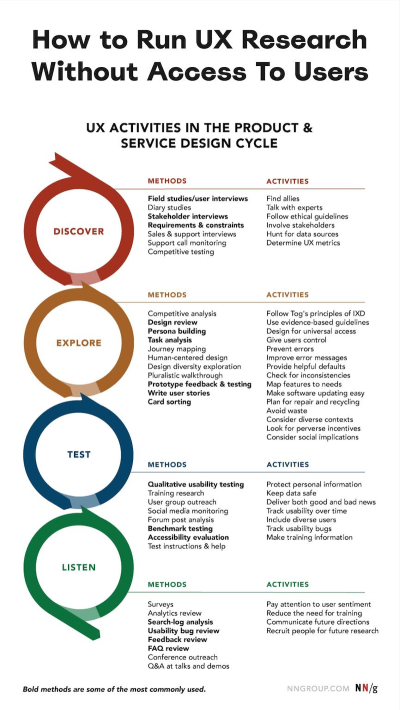
Making A Strong Case For UX Research
Ironically, as H Locke noted, the stakeholders who can’t give you time or resources to talk to users often are the first to demand evidence to support your design work. Tap into it and explain what you need. Research doesn’t have to be time-consuming or expensive; ask for a small but steady commitment to gather evidence. Explain that you don’t need much to get started: 5 users × 30 minutes once a month might already be enough to make a positive change.
Sometimes, the reason why companies are reluctant to grant access to users is simply the lack of trust. They don’t want to disturb relationships with big clients, which are carefully maintained by the customer success team. They might feel that research is merely a technical detail that clients shouldn’t be bothered with.
Typically, if you work in B2B or enterprise, you won’t have direct access to users. This might be due to strict NDAs or privacy regulations, or perhaps the user group is very difficult to recruit (e.g., lawyers or doctors).
Show that you care about that relationship. Show the value that your work brings. Explain that design without research is merely guesswork and that designing without enough research is inherently flawed.
Once your impact becomes visible, it will be so much easier to gain access to users that seemed almost impossible initially.
Key Takeaways
- Ask for reasons for no access to users: there might be none.
- Find colleagues who are the closest to your customers.
- Make friends with sales, customer success, support, QA.
- Convey your questions indirectly via your colleagues.
- If you can’t get users to come to you, go where they are.
- Ask to observe or shadow customers at their workplace.
- Listen in to customer calls and interview call center staff.
- Gather insights from search logs, Jira backlog, and support tickets.
- Map key themes and user sentiment on TrustPilot, AppStore, etc.
- Recruit users via UserTesting, Maze, UserInterviews, etc.
- Ask for small but steady commitments: 5 users × 30 mins, 1× month.
- Avoid ad-hoc research: set up regular check-ins and timelines.
Useful Resources
Meet Smart Interface Design Patterns
If you are interested in similar insights around UX, take a look at Smart Interface Design Patterns, our 10h-video course with 100s of practical examples from real-life projects — with a live UX training later this year. Everything from mega-dropdowns to complex enterprise tables — with 5 new segments added every year. Jump to a free preview.

100 design patterns & real-life
examples.
10h-video course + live UX training. Free preview.
(yk, il)

